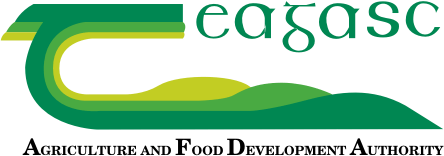29 March 2022
Grazed grass is still the cheapest and best feed for cattle
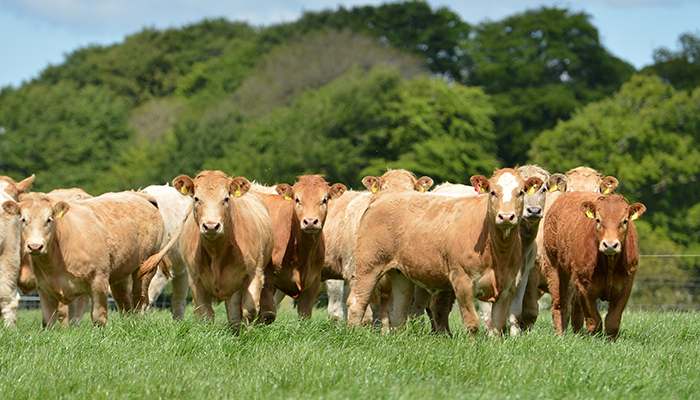
Teagasc Beef Specialists compiled a useful helpsheet for suckler and beef farmers to help with decision making in these times of high input costs. Get advice and tips on Grassland Management, Fertiliser for grazing and silage, Fodder Budgeting and What else can you do? Get the helpsheet here
Download the Grazed grass is still the cheapest and best feed for cattle – Helpsheet as a PDF
Get Cattle and Fertiliser out
Grassland Management
Grazed grass is still the cheapest and best feed for cattle at 10c per kg DM
• Get stock out as early as possible – save the silage already in the pit/bale. It will be much more expensive to make this year
• Complete a spring rotation planner
• Put in paddocks to grow more grass – you need to utilise every blade of grass grown
• Cattle should not be in the same paddock for more than three days to protect regrowth’s and maximise growth rates, “grow in three weeks and graze in three days”
• Reels and pigtails will be key
• 70-75% of all grass is grown by the end of June so we need to act now
Fertiliser
• Secure your silage fertiliser and your first two rounds of fertiliser now
• Apply fertiliser as soon as possible at 25 -35 units of Nitrogen (N) per acre depending on demand
• Follow three weeks later with another round.
• Check soil samples, if you have low index P& K soils apply at least 1.5 bags of 18-6-12 per acre by the end of April. If you have index 3 or 4, you may be able to skip P & K for this year.
• Apply lime, where required to grazing ground, it will release P from the soil and a possible 64 units of N per acre. Avoid lime on silage ground before harvest
Safeguard Fodder For Next Winter
Fodder Budget
• Silage is still much cheaper than meal at 20c versus 44c per kg DM
• Complete a fodder budget – what silage do you require for next winter, how much is left in the pits, how much do you have to grow
• Ensure to build in a 3-4 week buffer
• Plan for top quality silage 72 DMD + for younger stock and finishing cattle to reduce the meal requirement. Fertilise early and cut before the 20th of May
• Sucker cow silage can be cut later, up to the end of June.
• 75% of fodder requirements for next winter should be in place by the end of June
• Only grow what you need
• Graze the rest to reduce fertiliser requirement
Fertiliser for silage
• Keep slurry for silage ground
• First cut silage requires 80 – 100 units of Nitrogen (N) and Potassium (K) per acre. It requires 16 units of Phosphorous (P) per acre
• With Slurry: Apply 3,000 gallons of slurry, 60 units Chemical Nitrogen and 15 units of sulphur per acre. Aim for 80 units of N per acre
• No Slurry: Apply 3 bags of 13-6-20 plus 41 units of chemical Nitrogen and 15 units of sulphur per acre. Aim for 80 units of N per acre
• 75% of all silage required should be cut by end of June
• Surplus Bales, Don’t forget, if you reduce the amount of fertiliser applied to grazing ground you won’t get as many surplus bales
What else can you do?
• Cull all unproductive stock – cows not in calf, cows that lost calves etc
• Plan the years fertiliser, can you afford it, if not, what are your choices
• Do a cash flow budget
• Talk to your Advisor – there are always options
Use the Fodder Budget below to calculate your fodder needs.
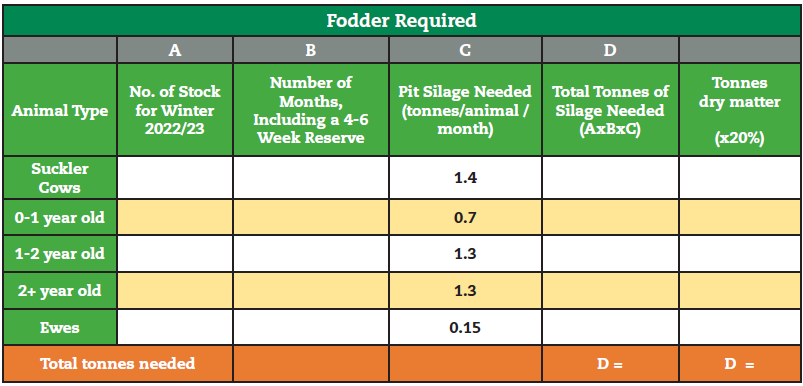
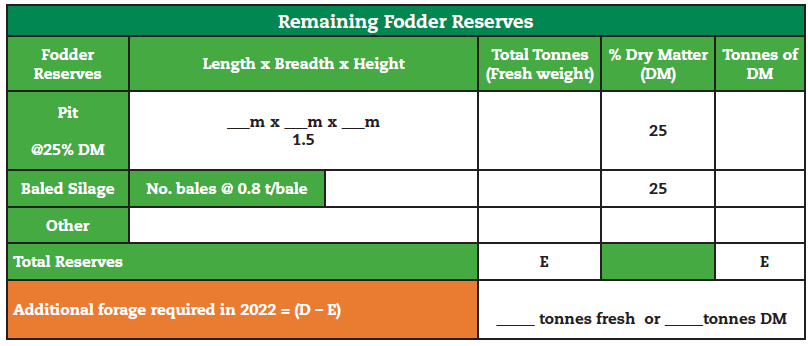
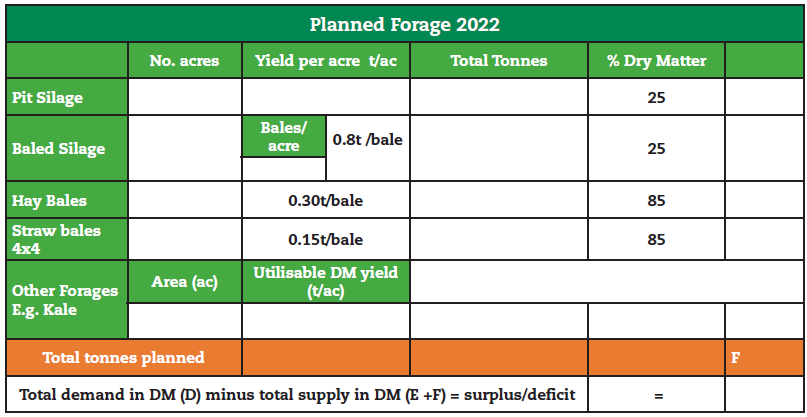
To keep up to date with current information see Food and Fodder Security for drystock farmers.
